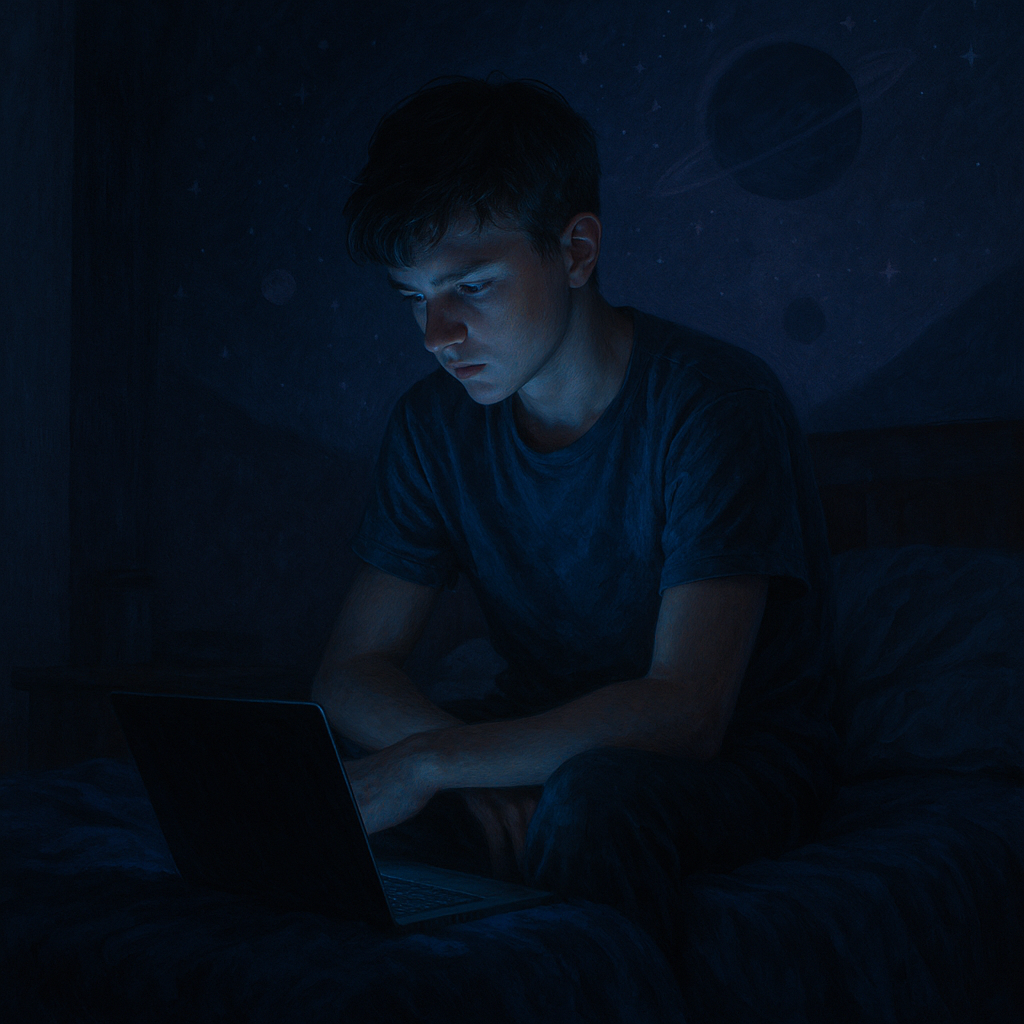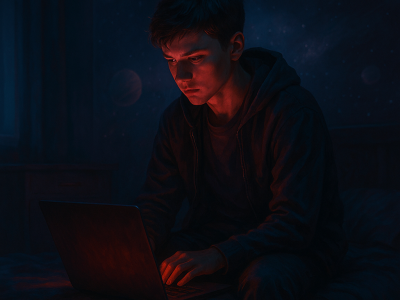A 13-year-old boy stabs his classmate to death.
It sounds like fiction. But it isn’t far from reality. That horrifying scenario is the plot of Netflix’s new four-part series Adolescence, a show that has quickly become a global sensation. Set in Britain and filmed in continuous shots that lend the story a brutal, real-time intensity, Adolescence follows the story of Jamie Miller, a quiet boy from a seemingly stable family who commits a shocking act of violence. But this is no typical crime drama. There is no mystery about what Jamie did. The question is why he did it.
That question echoes far beyond the screen. The series strikes a nerve because it reflects a growing crisis in the real world: the rise of misogyny among teenage boys, the isolation of young males, and the radicalising power of online echo chambers. As boys and young men struggle with loneliness and identity in an increasingly digital society, many are turning to harmful ideologies for a sense of meaning and belonging. The science behind this trend is clear. And it is deeply troubling.
The psychological toll of male loneliness
Early adolescence is a developmental minefield. During this period, the brain undergoes profound changes. Risk-taking behaviour increases. Emotional regulation is unstable. Identity formation becomes paramount. Without strong emotional support systems, adolescents are vulnerable to influences that offer quick gratification or belonging.
Dr Caroline Fenkel, chief clinical officer at Charlie Health, explains: “Without strong emotional support systems, they’re more likely to seek out anything – people, content or behaviours – that gives them a temporary sense of relief, power or belonging.”
The numbers confirm this. Surveys by the Survey Center on American Life show that a quarter of men under 30 report having no close friends. Men are also significantly less likely than women to receive emotional support from friends. In a digital era, where connection is often replaced with screen time, this isolation can fester into frustration, bitterness and ultimately rage.
Adolescence captures this descent with chilling clarity. Jamie is not a caricatured villain. He is a boy lost in plain sight. His interactions with a court-appointed psychologist reveal how humiliation, sexual confusion and a thirst for validation led him to adopt extremist online ideologies.
Inside the digital rabbit hole
The series sheds light on the hidden world of online radicalisation. The so-called manosphere – a loosely connected network of websites, forums and influencers promoting misogyny, male supremacy, and opposition to feminism – plays a central role in Jamie’s transformation. This digital underworld thrives on platforms like Reddit, 4chan, YouTube and TikTok. Often cloaked in memes or fitness advice, the content appeals to vulnerable young minds.
Jamie’s exposure to such ideology is signalled through the show’s clever use of emojis. In one scene, a detective is confused by Katie’s comments on Jamie’s social media. It takes his son Adam to decode them: a red pill emoji, a kidney bean, and the 100 symbol. Each of these has specific meanings in manosphere culture. The red pill refers to an awakening to the so-called truth about gender roles. The 100 emoji relates to a toxic theory of attraction, and the kidney bean is associated with incel identity.
Jack Thorne, co-creator of the show, said he was shocked by the appeal of such content when he began his research: “As a teenager, I would have totally believed that we’re living in this female-dominated space, that our very nature is under threat, and that our job as men is to get fit, get as attractive as possible and learn how to manipulate and possibly even harm in order to reset that equation.”
While extreme influencers like Andrew Tate draw headlines, Adolescence reveals that the real danger often lies in subtler figures. These are YouTubers who mix misogyny with fitness advice, or TikTok creators who pair self-help with anti-feminist rhetoric. The radicalisation pipeline begins long before a boy reads a violent manifesto.
Are parents still in control?
Jamie’s parents are not abusive or absent. They love their son. But they fail to realise what is happening behind the closed door of his bedroom. This is the paradox that many modern families face. By overprotecting children in the physical world, while underestimating the dangers online, parents unintentionally leave them exposed to some of the darkest corners of the internet.
Emily Cherkin, founder of The Screentime Consultant, puts it bluntly: “Scary versus dangerous is this idea that parental anxiety is heightened by horrible click-bait headlines. It’s the confirmation bias that the world really is dangerous. I’m actually safer giving [technology] to my child because they are physically in my house.”
Today’s teenagers are more digitally connected than ever before. According to a 2024 Pew Research Center survey, 96 percent of teens aged 13 to 17 use the internet daily. Nearly half say they are online almost constantly. Smartphones are now owned by 95 percent of teens. For parents who grew up before the internet, it is difficult to grasp just how immersive and persuasive online culture has become. And for children, it is harder than ever to distinguish between the real world and the curated, algorithm-driven realities fed to them daily.
The role of schools in early intervention
Teachers, too, have a crucial role to play. Because they observe students daily and in social contexts, they are often the first to notice behavioural shifts or emotional distress. Jennifer Greif Green, a child clinical psychologist, argues that teachers are uniquely positioned: “They can compare a student to 20 or 30 other children who are in the same age bracket and operating in the same context. That’s different from parents or family members.”
Yet beyond early childhood, schools often abandon social-emotional learning (SEL) in favour of academic rigour. This is a missed opportunity. A 2023 global meta-analysis covering over 400 studies from 53 countries found that SEL significantly improves academic outcomes, mental health and even school climate.
The show highlights this educational gap. While Jamie’s emotional state deteriorates, no teachers intervene. No counsellors step in. It is a stark reminder of how schools can sometimes overlook the internal battles students are fighting.
A cultural reckoning in the UK and beyond
The release of Adolescence coincides with a broader conversation in Britain about youth crime, mental health and toxic masculinity. In early 2024, UK Prime Minister Keir Starmer warned of a rising threat from young men radicalised in their bedrooms. He described them as “loners, misfits and young men accessing all manner of material online”, often inspired by extremist ideologies.
In the same year, Southport killer Axel Rudakubana was sentenced to 52 years for murdering three girls at a Taylor Swift-themed workshop. While Adolescence was conceived before this attack, its release in the aftermath makes its message feel urgent and necessary.
The show is now being shown for free in secondary schools across the UK. Starmer has endorsed this move, saying: “It’s a cultural issue, and therefore we’re going to have to look more broadly, work as a society on this, and discuss it.”
From screen to society: Where do we go from here?
The makers of Adolescence did not set out to preach. But they have opened the door to a conversation many have avoided for too long. Teenage boys are facing a crisis of identity. The response must be collective.
Parents can begin by having open, non-judgemental conversations. Schools should integrate SEL into the curriculum beyond primary years. Policymakers must treat digital safety as a public health issue. And tech companies must be held accountable for the content their algorithms promote.
There is also a need for role models who can model masculinity without domination. For teens, this could mean finding community in sports, the arts or volunteering. For parents, it means setting boundaries not just for screen time but for emotional connection.
Cherkin suggests a new parenting mantra: “Later is better; less is more; relationships and skills before screens.”
The red pill ideology that grips Jamie in Adolescence may be fictional. But the anger, loneliness and confusion behind it are very real. The time to act is now. If we do not, we risk losing more boys to a narrative of hate.
What kind of boys are we raising in the age of algorithms? And who is really guiding them?



